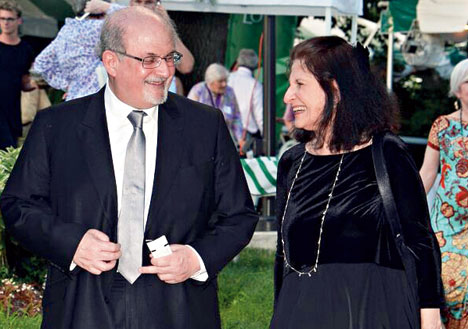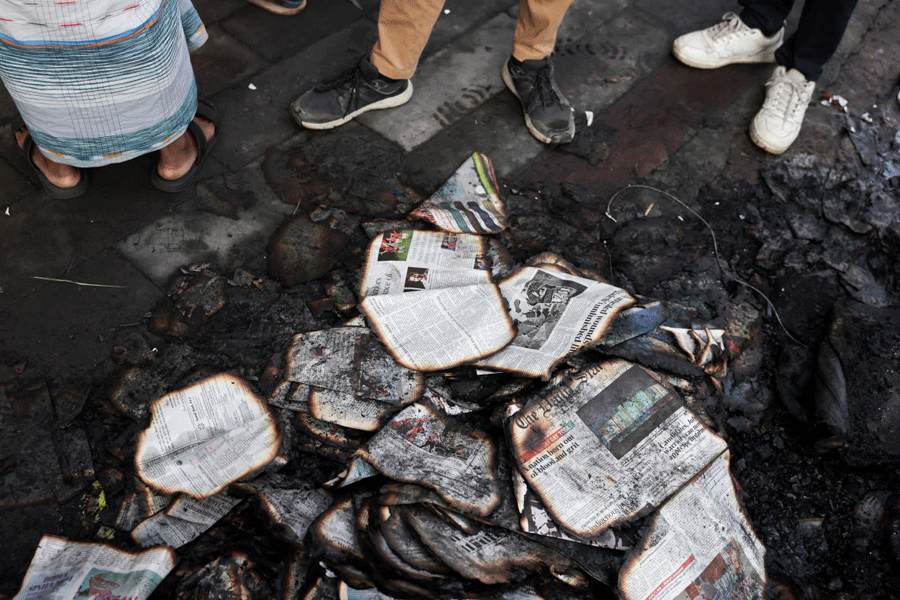
When Sameen Rushdie was a child in India in the 1950s, she unpacked a tiffin at school every day. The steel compartments of the traditional lunchbox held home-cooked macaroni and keema bound with melted Cheddar and covered with grilled tomatoes. Smoky kebabs with tender, cold parathas. Moats of mashed potato around ginger-spiked beef and peas.
It was only lunch. But for Ms Rushdie, who would go on to write Indian Cookery, a cult-favourite cookbook published in 1988 in the United Kingdom, it was also a lesson in how food, history and politics were inextricably intertwined.
The contents of her tiffin told a story: Ms Rushdie was a Muslim kid, sitting down to eat British-influenced Indian food, in the cosmopolitan hub of Bombay at the end of British colonial rule. She knew that eating meat put her in the minority among the Hindu vegetarians at her school, and she came to think of lunchtime as an opportunity to quietly rebel, to assert all the particulars of her identity while relishing in its flavours.
In 1947, the country was split into India and Pakistan, and millions of people were displaced. Though many Muslim families went to Pakistan, Ms Rushdie’s family stayed put in Bombay. “To be a Muslim who had not defected to the promise of safety and prosperity was a complex and confusing thing,” she wrote in her book, which has since fallen out of print in Britain.
But later this month, her book is due for a comeback, as Picador publishes Sameen Rushdie’s Indian Cookery, a new edition that for the first time introduces American readers to Ms Rushdie’s work and to the recipes of her childhood, from her family’s special Sunday lunch of Sabut Raan (a whole leg of lamb rubbed with yogurt and toasted spices and braised in the oven), to everyday vegetable dishes of okra and eggplant, to her father’s favourite: calf’s brains sauteed with garlic, ginger and fenugreek.
There were no photographs in the original book, though Ms Rushdie did appear on the cover with short, shiny black hair, wearing a glamorous red-trimmed white sari and a string of pearls, sitting down at an elegant table crammed with platters of food, as if a dozen dinner guests would arrive at any moment.
That cover might suggest a kind of cushy, dated charm, but in her writing, Ms Rushdie was sharp and ahead of her time as she aimed to dismantle the stereotypes that had shaped outsiders’ perceptions of Indian cuisine for centuries — stereotypes that persist today.
“I was young, I was direct and I was cross about a lot of things,” said Ms Rushdie, who is now 69.


As a working mother in London in the 1980s, she was furious with the myths and cliches surrounding Indian cuisine, which as she noted in her book, were established during British colonial rule.
She knew very well that the food of India, Pakistan and Bangladesh wasn’t an intensely spicy monolith, or the stuff of cheap lunch buffets. She knew it wasn’t all greasy, overcooked or brightly tinted with food colouring, as it often was at restaurants in Britain at the time.
“The food that people called Indian food, I thought it was so awful,” Ms Rushdie said. She barely recognised it.
Inspired by writers like Claudia Roden, Madhur Jaffrey and Elizabeth David, Ms Rushdie took a clear, matter-of-fact tone and a precise, unfussy approach, reclaiming the story of Indian cuisine and reshaping the narrative by sharing the foods of her North Indian family.
“I wasn’t setting out to cover the whole subcontinent,” she said. “I just wanted to do something personal to me, to talk about Indian food in a real way.”
Being “real” meant being specific and sidestepping all of the cliches, including the notion that Indian cuisine was too mystical, complex or time-consuming for the average home cook to handle. (“For best results, cook your biryani by candlelight,” Ms Rushdie wrote sarcastically in the book’s introduction.)
She knew from experience that she could get home from work, where she taught adults to read and write, and get a satisfying meal on the table for her family in about 45 minutes. She wanted her book to illustrate that, not just for those unfamiliar with Indian cuisine, but for Indian home cooks, too.
“I remember thinking, it wasn’t going to have any glossy pictures, because it was so low budget,” she said. “So the recipes had to be good.”
As she worked on them, Ms Rushdie enlisted her brother, Salman Rushdie, to help. (His novel The Satanic Verses was published in 1988, the same year as her cookbook.)
“I was the other person who knew what our family’s food should taste like,” said Mr Rushdie, 70, who became his sister’s unofficial recipe tester, taking each freshly-typed recipe back to his own apartment in Islington, following it without deviations and reporting back on the results.
“If the book had come out in the US back then, in 1988, I don’t think there would have been wide interest because there wasn’t wide interest in Indian cuisine here,” said Mr Rushdie, who moved to New York in 1999. “In a city of a million restaurants, Indian cuisine was very poorly represented. And when it was, it was represented at the bottom end of the market.”
On a visit to Los Angeles, Mr Rushdie remembers being taken out to what he was told was a very good Indian restaurant.
“And all the waitresses were dressed as belly dancers,” he said. “It was an education into how unreal people’s understanding of India was at the time.”
Meherwan Irani, an American restaurateur who moved from India to the United States to attend graduate school in South Carolina in the 1990s, remembers a string of poorly made curries at lunch buffets in the South that followed what he called “the usual tropes.”
It was a familiar experience for any immigrant moving to the United States, but Irani took it personally. He felt the food misrepresented who he was, and where he came from.
“It left such an impression on me,” he said. “It violated my sense of what was right and wrong with the world.” He went on to open Chai Pani in 2009, in Asheville, North Carolina, and now has five restaurants across the South. He is one of several pioneers who have helped to complicate and expand the definition of Indian cuisine in the United States, and to familiarise a wider audience with its regional flavours.
“Now you can see an American ordering a kati roll as casually as they order pizza,” Irani said of his latest restaurant, Botiwalla, inside Ponce City Market in Atlanta.
When Ms Rushdie found out that her book was returning to print in the United States this year, she was thrilled. “I get a feeling that Indian food is so much more on the map now,” she said.

“There was a time when people were very reluctant to cook Indian food at home; they felt it was very other,” she said. “The ingredients were not easily available, but now you can get everything, everywhere.”
Ms Rushdie left Mumbai as a teenager and briefly went to school in England, but soon left for school in Pakistan at 16. “For years, the family was in flux,” she said, with her brother at boarding school, her mother in India and her father in England.
Though Ms Rushdie worked in Karachi, Pakistan, as a lawyer for a few years after college, she soon shifted to working in adult literacy in London, teaching people to read and write.
In 1983, Ms Rushdie married Abdul Momen, a Bengali man with roots in India’s eastern coast, and though she hadn’t been too fond of fish before that, her cookbook contains a variety of seafood recipes that she learned to make through him. Now divorced, they have two daughters, who both live in London.
Ms Rushdie said she learnt the basics of how to cook in about a week, when her mother had to leave town abruptly to take care of her own mother, and gave her some brief instructions for feeding the family.
“There’s nothing to it,” her mother said, as Ms Rushdie got out a pencil and tried to write everything down: how brown the onions should get and how soft the potatoes should be. A teenager at the time, she had no choice but to develop a fast, confident and practical approach in the kitchen.
“I was thrown in at the deep end,” Ms Rushdie said. “And what I learnt was that you don’t have to be born with some gift to cook. We can all do it.”
Tejal Rao
(The New York Times News Service)











